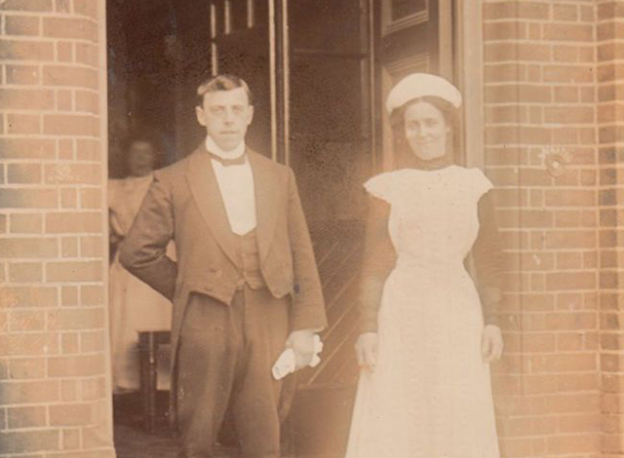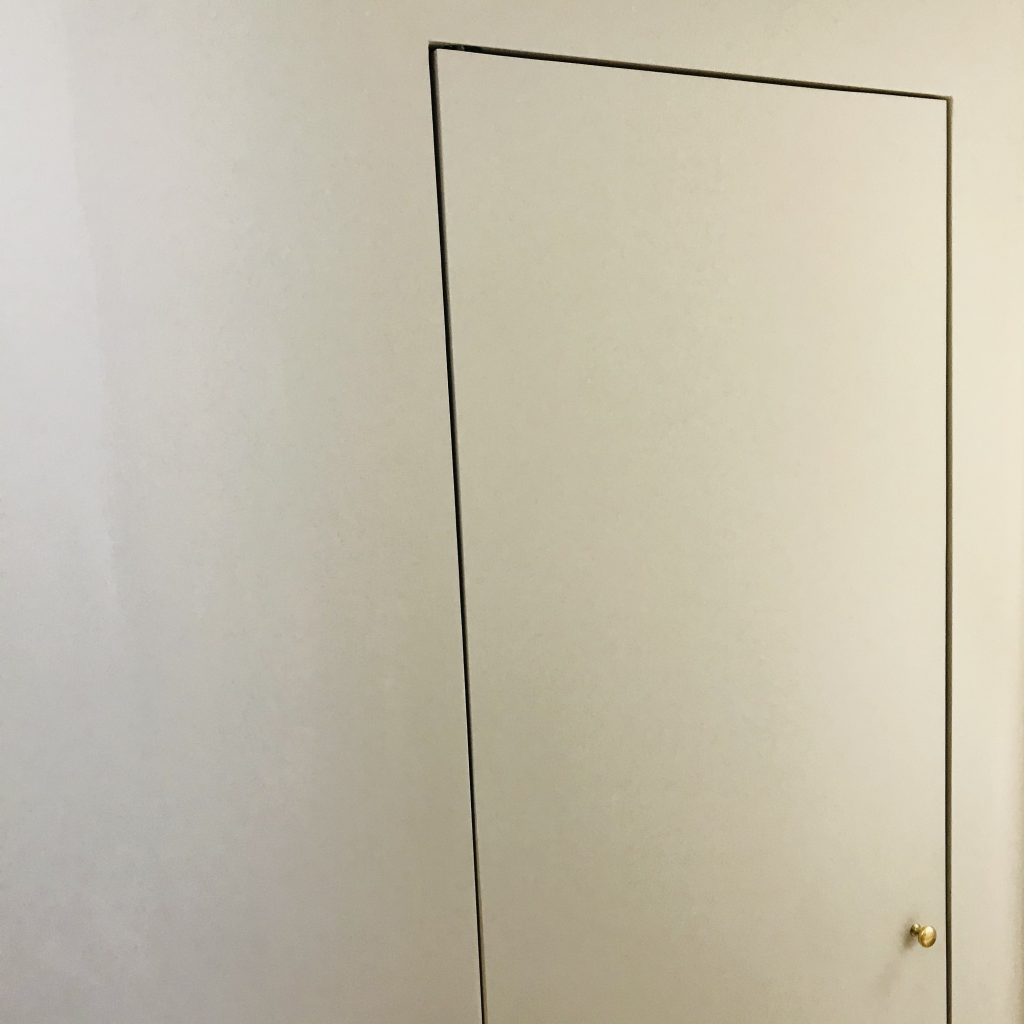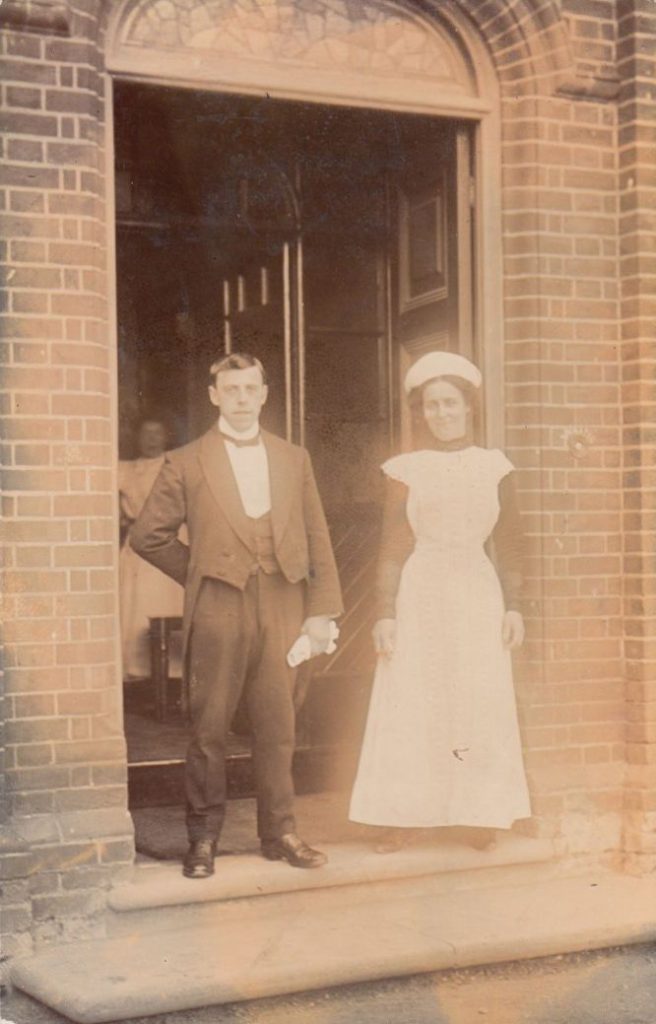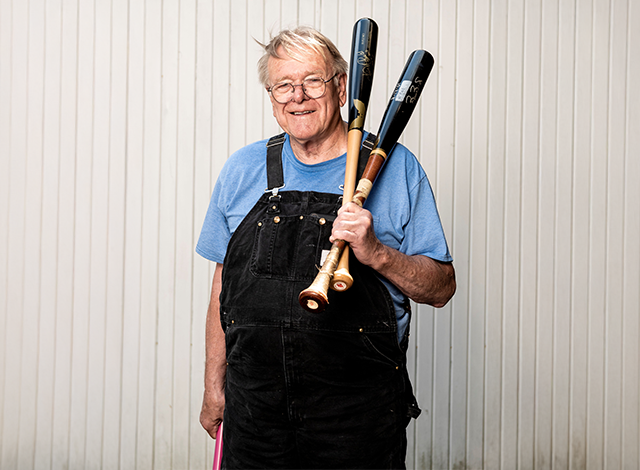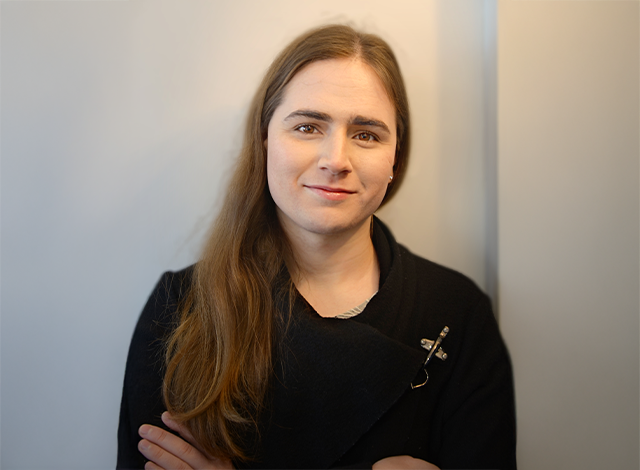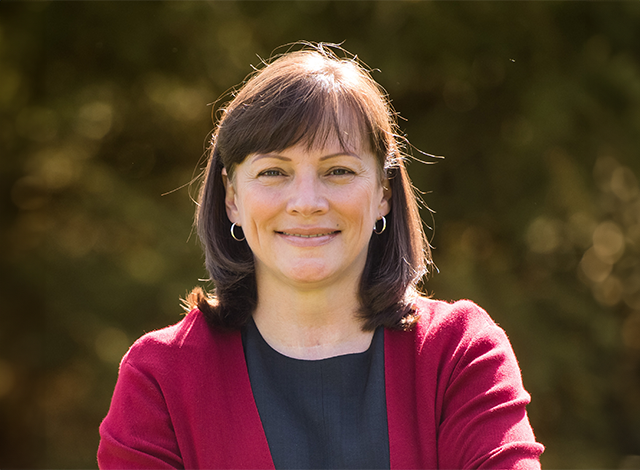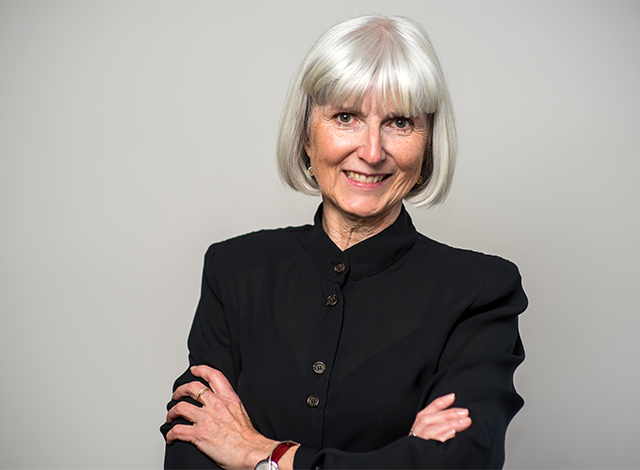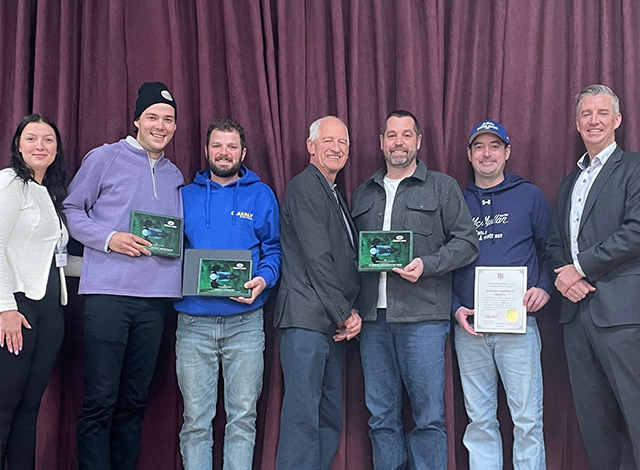When we moved into the Keyhole House, we noticed an odd-looking panel nailed to the wall in the second-floor hallway. A few weeks later, we pried off the mysterious board and discovered two small steps descending into darkness. A flashlight revealed that taking a third step would result in a fall through the kitchen ceiling! We had discovered the remains of the servants’ stairs, a common feature in houses built around 1893. During the Victorian era, many middle-class families were able to afford a domestic servant who lived with them. Keeping a servant was an outward sign of respectability and status. Houses of a certain size were designed with two sets of stairs, so that servants could remain out of sight. These back staircases were frequently compressed into small spaces by ignoring building codes and safe stair layout. Steep, shallow steps of irregular heights combined with a servant in a long skirt, descending the stairs sideways while carrying a heavy tray, could be a recipe for disaster. As a result, these dangerous structures are often referred to as “hidden killers” or “death traps.”
Victorians were obsessed with propriety, from wearing appropriate clothing and extravagant home decor to serving lavish meals and employing servants. Ample funds and the right books on etiquette were important ingredients when climbing the social ladder. In the 1890s, the head of a household employing a domestic servant was often a merchant, manufacturer, or professional. However, it was also possible for artisans and semiskilled workers to do so as well. In 1892, Joseph Boynton was one of several carpenters hired to build the Keyhole House. His annual wages would not have exceeded $500. However, according to the 1891 census, Boynton and his wife Adeline had an 18-year-old domestic servant living with them, to help take care of their three children.
In the late nineteenth century, it was most common for a live‐in domestic servant in Canada to be a literate, Canadian‐born woman. She would speak English or French and have gone through the compulsory school system. Young immigrants often chose domestic service as a way into Canada and its labor markets, but they were a less popular choice with employers. At the time, thirty-eight percent of all women in the workforce had occupations as domestic servants—more than the entire manufacturing sector. The life of a servant involved long hours, a lack of freedom, and a risk of exploitation and abuse. High turnover rates were the result. Living conditions would usually consist of a small, sparsely furnished bedroom on an upper floor or even the basement. Access to a toilet separate from the owners was also the norm. Servants had the responsibility of staying out of sight while taking care of all the household chores. Accommodations were usually connected to the kitchen by a back staircase. From the kitchen they would access the basement where the cold storage rooms, furnace or boiler, and coal rooms were located. We were puzzled as to why the interior doors at the Keyhole House open into the middle of the room and not against the wall. We discovered that it was done intentionally, so that a servant entering a room could withdraw without seeing who was in the room or what they were doing. Victorians had a tendency not to trust their servants, so everything was kept under lock and key, from clothing and books to liquor and linens. Although everyone lived under the same roof, the masters and servants lived almost entirely separate lives.
Servants have largely been replaced by household technology. Intelligent cordless vacuum cleaners, microwave ovens, and electric washing machines have replaced much of domestic human labor. At the Keyhole House, we decided to transform what remained of our servants’ staircase into a linen closet. It is concealed behind a special door flush-mounted right into the wall without any visible framing or hardware. It is known as a “jib door” or, more commonly, a secret door. Queen Elizabeth has one at Buckingham Palace, Marie-Antoinette had one at the Château de Versailles, and now we are proud to have one at the Keyhole House.
Ted & Marion Outerbridge are currently restoring a Smiths Falls heritage home built in 1893. They are also being swept away by local history & mystery. You can follow them at on Instagram, Facebook, and TikTok @thekeyholehouse or email ted@tedouterbridge.com.

